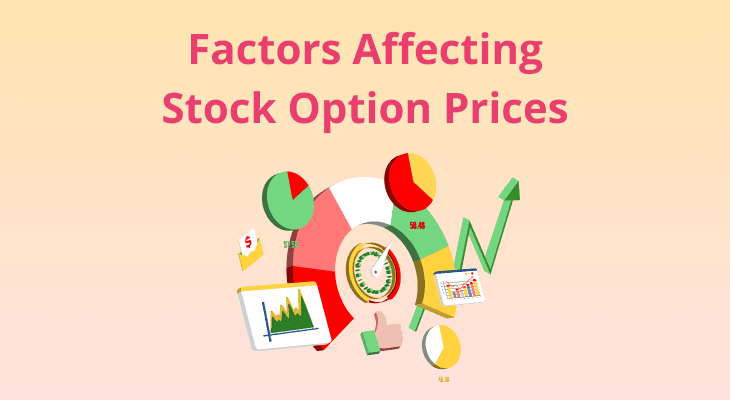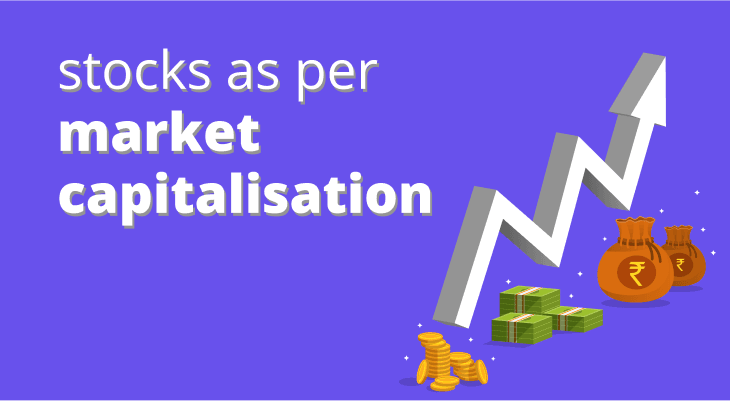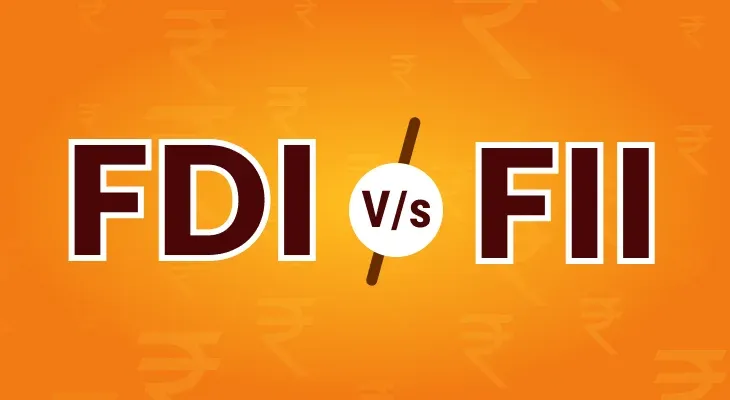
Table of content
Key Factors Affecting Stock Option Prices
Stock options derive their prices from multiple market and economic factors, making them more complex than traditional stock trading. Unlike stocks, whose prices are determined by supply and demand, options pricing is influenced by both external market forces and mathematical components related to time, volatility, and underlying asset movement.
An option’s price consists of two main components:
- Intrinsic Value – The inherent worth of the option based on the stock price.
- Time Value – The potential for the option to become profitable before expiry.
However, several other factors affecting option premiums, such as volatility, interest rates, dividends, and investor sentiment, play a crucial role in determining the overall cost of an option. Understanding these factors affecting stock option prices can help traders make better-informed decisions.
Intrinsic Value
Intrinsic value represents the real, tangible value of an option if exercised immediately. It measures how much an option is already in-the-money (ITM) and is determined by the relationship between the option’s strike price and the current market price of the underlying stock.
- For call options: Intrinsic value = Current stock price – Strike price
- For put options: Intrinsic value = Strike price – Current stock price
If the result is negative, the intrinsic value is zero, meaning the option is out-of-the-money (OTM) and holds only time value.
Example:
If a stock trades at ₹1,500 and a call option has a strike price of ₹1,400, the intrinsic value is ₹100 (₹1,500 - ₹1,400). This means if the option were exercised, the holder would gain ₹100 per share.
However, if the stock price drops to ₹1,300, the intrinsic value becomes zero because the option is now out-of-the-money, meaning it has no immediate worth and derives its price solely from speculation and time value.
Time Value
Time value represents the extra amount traders are willing to pay beyond the intrinsic value, considering the possibility of future price movements before expiration. It reflects the uncertainty and potential for an option to become profitable over time.
The longer the time left before expiration, the greater the time value, as there is more opportunity for the stock price to move favourably. As the option nears expiration, the time value decays, eventually reaching zero on the expiry day of the contract. This phenomenon is called time decay (theta decay).
- Longer expiration = Higher time value
- Shorter expiration = Lower time value
Example:
Consider two options with the same strike price of ₹1,000 with a call option expiring in 30 days and a call option expiring in 90 days.
Even if both are currently out-of-the-money, the 90-day option will be more expensive because there’s a higher chance the stock price will rise above ₹1,000 in the next three months compared to just 30 days. As expiration nears, the time value erodes, meaning short-term options experience faster time decay than long-term options.
Volatility
Volatility measures the degree of price fluctuation in an underlying stock over time. The higher the expected movement, the greater the chances of an option becoming in-the-money, leading to a higher option premium.
There are two key types of volatility:
- Historical Volatility – The past price fluctuations of a stock. Expensive option premiums.
- Implied Volatility (IV) – The market’s expectations of future price movements, which directly impact option pricing. Cheaper option premiums.
Example:
If Stock A frequently fluctuates between ₹900 and ₹1,100 within a short period, its option premiums will be higher due to the increased likelihood of the stock price reaching a profitable level. In contrast, Stock B, which moves within a narrow range of ₹980 to ₹1,020, will have lower option premiums because the price swings are minimal.
Interest Rates
Interest rates play an indirect but significant role in options pricing, particularly for call options. When interest rates increase, the cost of borrowing money to buy stocks also increases. This makes options more attractive compared to outright stock purchases, leading to higher call option prices and lower put option prices.
- Higher interest rates = Call option prices rise, put option prices fall
- Lower interest rates = Call option prices fall, put option prices rise
Example:
If the RBI raises interest rates, traders may hesitate to buy stocks on margin due to higher borrowing costs. Instead, they may prefer buying call options, increasing demand and pushing premiums higher. Conversely, put options may become cheaper as fewer traders seek downside protection.
Dividends
Dividends impact the pricing of call and put options on dividend-paying stocks. When a company announces dividends, its stock price typically drops by the dividend amount after the ex-dividend date. After this date, the option price is usually impacted in the following ways:
- Higher dividends = Call option prices fall, put option prices rise
- Lower dividends = Call option prices rise, put option prices fall
Example:
A stock trading at ₹1,200 declares a ₹50 dividend. On the ex-dividend date, all things staying equal, the stock price is expected to drop to ₹1,150. As a result:
- Call options become less attractive, leading to lower premiums.
- Put options become more valuable, as traders anticipate a lower stock price.
Underlying Stock Price Movement
Stock price fluctuations directly impact option premiums:
- Stock price rises → Call options increase in value, put options decrease
- Stock price falls → Put options increase in value, call options decrease
Example:
If a stock jumps from ₹800 to ₹900, a call option with a ₹850 strike price will become more valuable, while a put option with the same strike price will lose value.
Market Sentiment
Market sentiment refers to the overall attitude of investors toward a stock, sector, or economy. Strong bullish sentiment increases call option prices, while bearish sentiment increases put option prices. Factors influencing sentiment include earnings reports, economic data releases, geopolitical events, global pandemics, etc.
Example:
If a company is expected to report strong earnings, traders may buy call options in anticipation of a stock rally, pushing call option prices higher. Conversely, during economic uncertainty, traders may seek put options as hedges, increasing their premiums.
Supply and Demand
The basic economic principle of supply and demand also impacts option pricing. High demand for a specific option drives its premium higher, while low demand reduces its price.
- High demand for calls = Call option premiums rise
- High demand for puts = Put option premiums rise
Example:
If a stock is rumored to be a takeover target, traders may rush to buy call options, increasing their premiums even before the stock moves significantly. Similarly, if a stock is expected to decline sharply, demand for put options will rise, pushing up their prices.
Conclusion
Understanding the factors affecting stock option prices helps traders navigate market dynamics effectively. Intrinsic value, time value, volatility, interest rates, dividends, market sentiment, and supply-demand forces all contribute to option premiums. By analyzing these factors, you can develop better strategies for risk management and profitability in options trading.
FAQ
What are the main factors affecting stock option prices?
Stock option prices are influenced by intrinsic value, time value, volatility, interest rates, dividends, underlying stock price movement, market sentiment, and supply and demand. Each of these factors contributes to the overall premium of an option in different ways.
How does intrinsic value affect an option’s price?
Intrinsic value represents the actual worth of an option if exercised immediately. For call options, it is the difference between the stock price and the strike price. For put options, it is the difference between the strike price and the stock price. If an option is out-of-the-money, its intrinsic value is zero.
Why is time value important in option pricing?
Time value reflects the potential for an option to become profitable before its expiration. The longer the time until expiry, the higher the time value, as there is more opportunity for favorable price movement. However, time value declines as expiration approaches, a process known as time decay.
How does volatility impact option prices?
Higher volatility increases option prices because it raises the probability of the stock reaching a profitable level before expiration. Options on highly volatile stocks tend to have higher premiums due to the greater uncertainty in price movements. Low volatility reduces option prices as the likelihood of significant price changes decreases.
What is the effect of interest rates on option pricing?
When interest rates rise, call option prices tend to increase, while the price of put options tend to decrease. Higher interest rates make holding stocks more expensive due to borrowing costs, leading investors to favour call options instead. Conversely, when interest rates fall, put options may become more attractive.
How do dividends impact stock option prices?
Dividends reduce call option prices and increase put option prices. When a company announces a dividend, its stock price usually drops by the dividend amount after the ex-dividend date, making call options less valuable and put options more expensive due to the expected decline in stock price.
How does the movement of the underlying stock price affect options?
The price of an option is directly tied to the movement of the underlying stock. When a stock’s price rises, call options become more valuable, while put options lose value. Conversely, when a stock price falls, put options increase in value, while call options decrease.
How does market sentiment influence option pricing?
Market sentiment, driven by investor confidence, earnings reports, economic data, and geopolitical events, affects demand for call and put options. Bullish sentiment increases call option prices, while bearish sentiment leads to higher put option prices as investors hedge against potential declines.
How does supply and demand affect option prices?
When demand for a particular option increases, its price rises due to more buyers in the market. If demand decreases, the option price falls. Similarly, if there is a large supply of sellers for an option, the price may decrease, while limited supply can push prices higher.
Why do option prices change even when the stock price remains the same?
Even if a stock’s price remains unchanged, option prices can fluctuate due to changes in implied volatility, time decay, interest rates, or market sentiment. External events, earnings announcements, or shifts in investor expectations can also impact option pricing.


